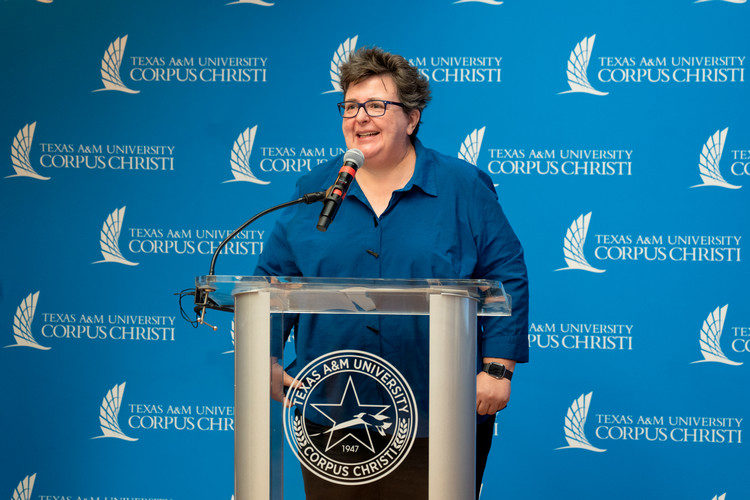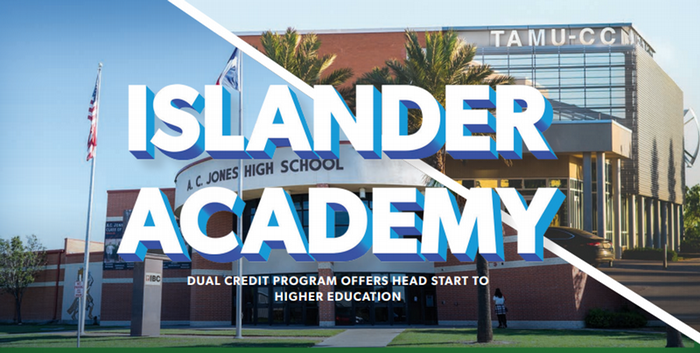Island University Researchers Examine How Harvey’s Record Rainfall Impacted the Gulf’s Tiniest Organisms
CORPUS CHRISTI, Texas – Hurricane Harvey, which made landfall on Aug. 25, 2017, continues to impact the lives of those living in the Coastal Bend. Reports of the massive structural damage to the coastal towns of Rockport and Port Aransas are synonymous with the aftermath of this hurricane. What is less known is how Harvey has impacted the tiny organisms called plankton that live in the waters of the Gulf.
Simon Geist, Ph.D., assistant professor for marine biology in the College of Science and Engineering (COSE) at Texas A&M University-Corpus Christi, recently received a $50,354 Rapid Response Research (RAPID) grant from the National Science Foundation (NSF) to study the“Response of Plankton Assemblages and Trophodynamics to a Historic, Hurricane-induced Floodwater Plume in a Subtropical, Pelagic Environment.” In other words, Geist hopes to understand how plankton communities, an important member of the food chain, are responding two, four, and eight months after Harvey dropped more than 60 inches of rain onto the Gulf Coast.
“As an early career scientist, I am especially happy to have obtained this NSF RAPID grant because it’s my first large award since I came to Texas from Germany two years ago,” shared Geist. “It has been a great experience so far to be part of a collaborative grant where four research labs at three different universities have joined forces to investigate how different plankton groups were affected by Harvey’s record-breaking rainfall.”
Geist, who is an expert on larval fish, teamed up with researchers at the University of Louisiana at Lafayette and North Carolina State University to investigate the effects of Harvey on plankton communities in the Gulf near Galveston. The term “plankton” includes Phytoplankton, which is made up by tiny plants or algae; Zooplankton, which consists of a range of animals from small crustaceans like copepods up to the larger jellyfish and Ichthyoplankton, larval fish that are several days to a few weeks old. These small oceanic organisms often have a limited ability to swim against the current but play an important part in the food chain.
“A huge influx of freshwater can affect the occurrence of planktonic organisms that cannot cope with a drop in salinity. In addition, the rainwater from Harvey also washed a lot of nutrients into the sea. This can, in turn, impact the ecosystem’s food web,” explained Geist. “A dramatic change in the abundance and composition of planktonic organisms at the base of the oceanic food web can impact the whole ecosystem.”
According to Geist, the effects of an event like Harvey could impact an organism up to a year later. To investigate the short and midterm response of the plankton communities to Harvey, Geist and the team of researchers embarked on three oceanographic cruises. During the cruises, the vessel stopped at ten stations at varying distances from the shore to take samples. Each sampling event took the scientists approximately three hours of intensive work during which depth profiles of water quality parameters such as temperature and salinity were measured and an array of special nets were deployed to collect plankton organisms of different sizes, which were then preserved for further analyses in the lab.
Geist also brought along Cristian Camacho, Daniel Hardin
“This research expedition was more than an opportunity to go offshore,” said Camacho. “Being on the expedition and working in Dr. Geist’s lab made me feel like I was truly a ‘scientist.’”
Shannan McAskill, an Island University Ph.D. student in the marine biology program and Geist’s research assistant for the project, along with several undergraduate students, are working to sort and analyze the collected samples in Geist’s Early Life History Research Lab and a final expedition is planned for March 2018.
“Working on the NSF RAPID plankton cruise has provided a unique opportunity for me to grow as a researcher,” shared McAskill, whose previous work focused on researching adult and juvenile fish. “Going on offshore expeditions has been an exciting and valuable experience. Dr. Geist has been incredibly helpful in teaching me how to properly collect, process and
Later in the project, Geist plans to compare the new data with historic larval abundances from NOAA SEAMAP monitoring cruises to further explore how big of an impact Harvey’s rain had on the abundance and health of larval fish in the affected Gulf waters.











